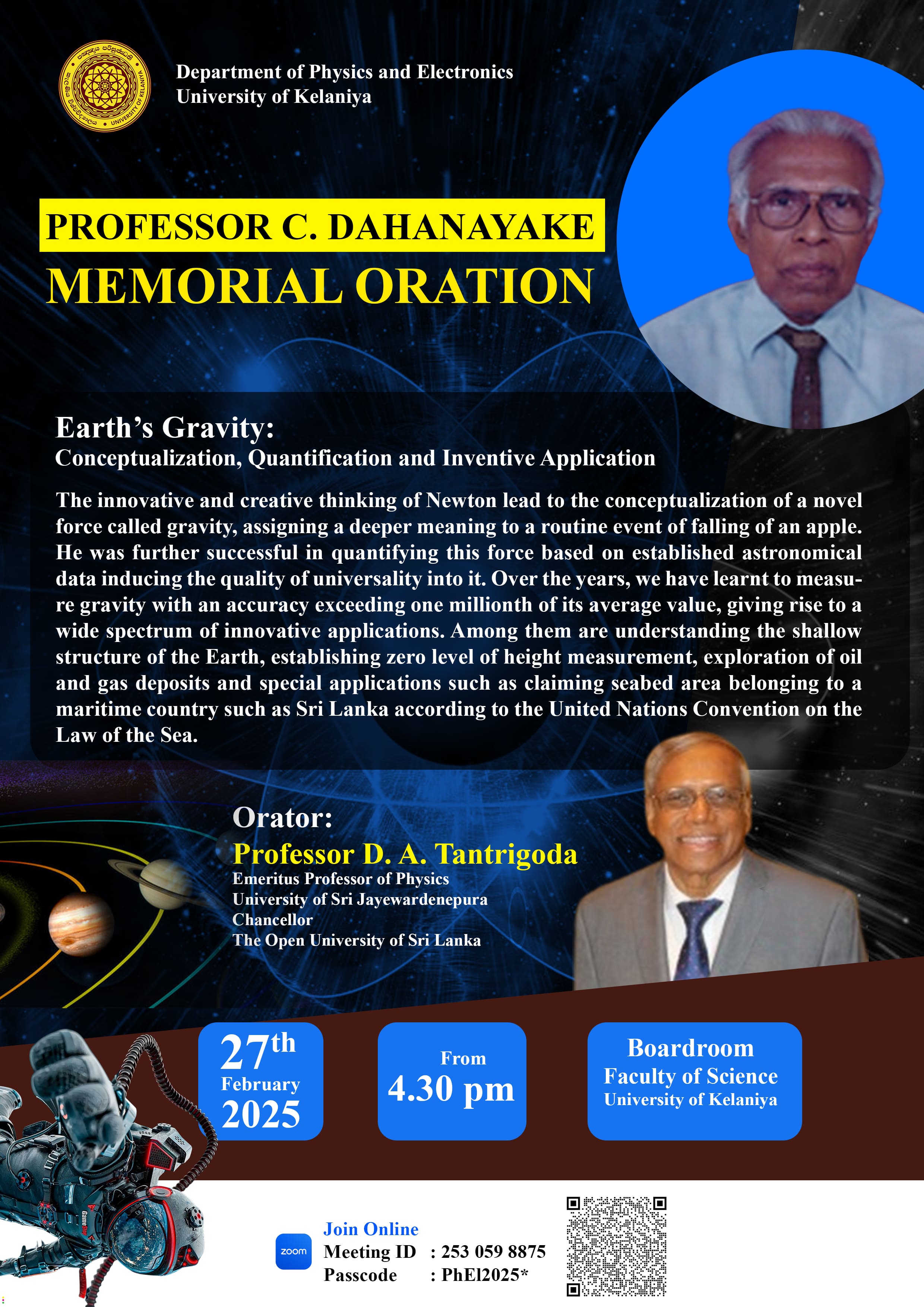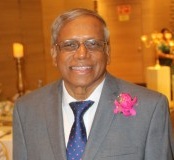Professor C. Dahanayake Memorial Oration - 2025
University of Kelaniya
Earth’s Gravity:
Conceptualization, Quantification and Inventive Application
The innovative and creative thinking of Newton lead to the conceptualization of a novel force called gravity, assigning a deeper meaning to a routine event of falling of an apple. He was further successful in quantifying this force based on established astronomical data inducing the quality of universality into it. Over the years, we have learnt to measure gravity with an accuracy exceeding one millionth of its average value, giving rise to a wide spectrum of innovative applications. Among them are understanding the shallow structure of the Earth, establishing zero level of height measurement, exploration of oil and gas deposits and special applications such as claiming seabed area belonging to a maritime country such as Sri Lanka according to the United Nations Convention on the Law of the Sea.


Professor D. A. Tantrigoda
Emeritus Professor of Physics
University of Sri Jayawardenepura
Chancellor
The Open University of Sri Lanka
Time : 4.30 p.m.
Venue : Boardroom, Faculty of Science
Zoom:
Meeting ID: 253 059 8875 Passcode: PhEl2025*
https://learn.zoom.us/j/2530598875?pwd=mbWdObIQZO38IGm3c1EQ6EajF8qdit.1&omn=99977091481
